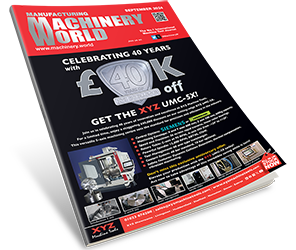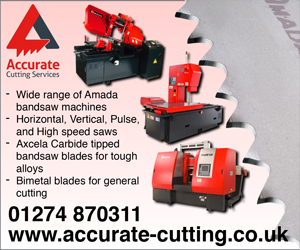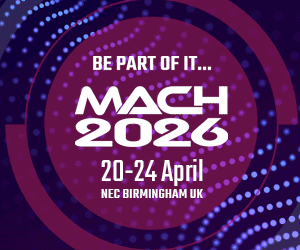The opportunity for any company to be more profitable by achieving significant reductions in machining cycle and overall processing times is an offer that cannot be ignored by anyone across all industry sectors. And for companies involved in the oil and gas market – where such savings are being achieved on workpieces like fluids ends, gate valves, drill bits and pump housings – this has even more relevance as the industry surveys the longer-term background of a diminishing need for fossil fuels.
“For instance,” says Lee Scott, Starrag UK’s Director for Sales and Applications, “by adopting single set-up working on a Heckert 800 Athletic horizontal machining centre with DBF head (the DBF 800 machine), one company has slashed machining times on control valves from 20 hours to just 4.5 hours – achieving a 95% reduction in overall processing times and a 77% cut in cycle times.”
Complemented by a six-pallet linear storage system and 320-tool storage, the DBF 800 with its 45 kW/1,700 Nm torque/3,500 revs/min DBF head, runs unmanned and undertakes a non-stop routine of face milling using a 125 mm diameter cutter at a feed rate of 5,000 mm/min, end milling using a 50 mm diameter tool, solid drilling (70 mm diameter tool) then turning with 89 mm diameter tooling and a 300 mm diameter external turning tool.
The use of the DBF head ensures high process integrity and, of course, by undertaking complete machining in one set-up, the set-up not only reduces overall production times but it also obviates workpiece inaccuracies due to no re-clamping.
Mr Scott continues: “With some oil and gas industry manufacturers reviewing major projects with a view to implementing new projects in 2019/20, now is the time for everyone involved in the sector – especially specialist sub-contract machinists throughout the supply chain – to implement new, and more efficient and effective machining routines – or they will no longer remain competitive compared to competitors in other countries.”
He adds: “With long-range manufacturing forecasts predicting a reduction in global demand (and price) for fossil fuels, due to the increase in electric vehicles and the increased use of renewable energy, companies involved in machining oil and gas components must be at their most competitive NOW, at least to retain current contracts let alone secure new deals as we approach 2019/20.”
It’s a scenario that Starrag has addressed before. In the same way that the company focuses on the aerospace sector by developing sector-specific machines and routines that today are regarded as the de facto standard for cost-effective and highly efficient metalcutting in that industry, Starrag can now bring similar benefits to the oil and gas sector.
In addition to certain machines from the Dӧrries and Scharmann product ranges being ideally suited to such workpieces as connectors, and valve bodies and parts, a range of ‘standard’ horizontal machining centres has been developed (the DBF 630 and 800 models) that, crucially, utilise the Starrag DBF machining head for highly efficient and effective single set-up, multi-tasking machining. Now in its third-generation, the DBF head permits single set-up milling, turning and drilling.
The DBF spindle head comprises a faceplate with integrated work spindle and CNC radial facing slide. For turning on a fixed workpiece, the rotating turning tool – which has an axial runout of just five/six microns – can be radially adjusted by +/- 35 mm. In addition to external, internal and face turning, the head also permits conical and contour turning courtesy of the radial facing slide’s NC axis.
For milling and drilling, the work spindle is arranged in its central position.
Constructed using Starrag’s renowned build principles – where thermal machine stability ensures high process reliability and precise multi-side machining – and able to be ‘enhanced’ and integrated into unmanned cells with a choice of tool storage options from 60 to 320 tools, plus linear pallet storage systems, the Heckert DBF 630 and 800 machines are ideally suited to wet and dry machining.
The DBF 630 has X, Y and Z axes travels of 1,070 mm, 870 mm and 1,200 mm, respectively, feed ranges of up to 60,000 mm/min and, as standard, HSK-A 100 toolholder (optionally SK 50) in the 45 kW work/DBF spindle. The DBF 800 has similar feeds, toolholder and spindle ratings but larger X, Y and Z capacities of 1,320 mm by 1,070 mm by 1,300 mm.
Both DBF machines also feature five-axis trunnion capability with an option also for turning, to enable access to all features including compound angle holes – thus turning, milling, boring, drilling and thread generation in a single set-up.
“Importantly, the ultimate success of these technologies are, says Mr Scott, fully realised when they are applied in fully automated systems integrated by, for example, linear pallet systems and sophisticated, highly intelligent software routines to create high-performance (up to 95% utilisation levels) manufacturing cells boasting ‘maximum automation with minimal operator involvement’.
Roland Wozny, Product Sales Manager, highlights how the use of Dӧrries vertical turning machines and Scharmann four-axis Ecoforce horizontal machining centres in sophisticated manufacturing systems/cells where the welding of Inconel cladding (where machine rigidity – as available on these machines as well as the new Heckert DBF models – is paramount) is integrated into the production process and “is a development that is on the horizon”.
In the meantime, he points out how the Dӧrries Contumat double- and single-column, respectively, vertical turning lathes and Scharmann machining centres are already being used to great advantage in the production of oil and gas parts.
“Expansive machining capacities and torque ratings are available on these machines – on Dörries VCE models, tables up to 2,650 mm diameter for workpieces weighing 25,000 kgs, combined with 70 Nm torque on the main drive; on Dörries VC machines, tables up to 10,000 mm and torque ratings up to 833 Nm; and on the Ecoforce models, up to 4,500 mm in the X axis combined with 64 kW/4,000 Nm spindles.
“Utilising such capabilities, users are particularly already taking advantage of the ability to combine boring, milling, drilling and turning operations (even in the horizontal plane on the Ecoforce machining centres) in a single set-up by using, for example, live spindles, auxiliary heads and a wide selection of tooling (via automatic head/toolchangers).”
He adds: “The next major step of integrating into closed-loop production systems the welding process – of the Inconel cladding that is used to ‘protect’ parts that may spend 15-20 years in water – will see, for instance, Ecoforce machining centres being used to pre-machine components which are then sent for welding, then washing/cleaning before being returned to the Ecoforce for finish-machining as an integrated process. Manufacturing times are reduced from weeks to days.”
Now, as Mr Scott reinforces, the available Heckert DBF technologies are also producing substantial gains: “In one example – the production of fluid ends which have average life cycles of 2,000/3,000 hours – the use of a Heckert horizontal with DBF head is machining the ends from solid stainless steel blocks of four tonnes, in just 38 hours instead of 50 hours. That’s a cycle time saving of more than 20%.”
In this instance, the use of a Capto 8 head/drilling spindle plays a key role, exhibiting the high levels of rigidity required for drilling to depths of almost one metre with no adverse runout deviation.
“However, Starrag has been working with a number of tooling suppliers to develop optimised solutions that guarantee high process reliability,” says Paul Connor, Starrag UK Applications Manager, “and these include monobloc turning tools that exhibit superb quality finishes thanks to their ability to minimise vibration, as well as 950 mm long line boring tooling for the 60 mm diameter fluid ends”.
He adds: “In conjunction with the DBF head, such tools exhibit three times the stability of conventional heads/tooling.”
Says Mr Scott: “In one instance, three ‘conventional’ machining centres have been replaced by a single DBF machine. So, cycle time savings apart, the user has also gained further financial rewards by investing in just one machine that does the job of three!”
With oil giant BP suggesting there will be 100 million electric vehicles by 2035, coupled with an increased uptake of renewable energies and therefore the eventual reduced demand for oil and gas components, it is clear that savings can already be made to ensure profitable futures for everyone currently involved in machining oil and gas components.







